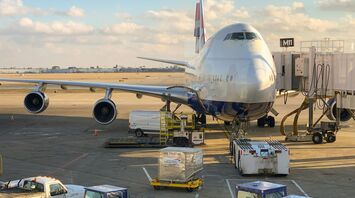5 Ways Cargo Planes Differ from Passenger Airliners

Cargo planes and passenger airliners serve fundamentally different purposes, which results in distinct design and operational features. While many commercial flights carry passengers, a significant number of aircraft are dedicated solely to transporting cargo for airlines worldwide. These freighters have unique characteristics tailored to maximize their efficiency in carrying goods. Here are five key differences between cargo planes and passenger airliners:
1. Lack of Windows
One of the most noticeable differences between cargo planes and passenger airliners is the absence of windows in cargo planes, except in the cockpit area. This design choice enhances the structural integrity of the aircraft since the continuous fuselage without windows is stronger than one with multiple glass openings. Additionally, eliminating windows allows for more space and flexibility in loading and securing cargo, making the aircraft better suited for freight transportation.
2. Larger Cargo Doors
Cargo planes are equipped with larger doors to facilitate the efficient loading and unloading of goods. These doors are typically located either at the rear or the front of the fuselage and open vertically. This setup allows cargo airlines to quickly transfer large quantities of freight at major hubs. In contrast, passenger airliners usually have smaller lower cargo doors designed for baggage and limited freight, lacking the capacity to handle the volume of goods that cargo planes can.
3. Weight Balance Systems
Maintaining weight balance is crucial for cargo planes, which often operate at maximum weight capacity. Unlike passenger aircraft that primarily manage passenger and luggage weight, cargo planes must ensure that freight is evenly distributed to avoid issues such as tail strikes during takeoff. To achieve this, cargo aircraft are equipped with systems of fasteners and locks to secure pallets and cargo, preventing any movement that could destabilize the aircraft during flight.
4. Dedicated Crew Areas
While cargo planes are not designed to carry passengers, they do have accommodations for crew members. Typically staffed by a pair of pilots, cargo flights on longer routes may require additional crew for rest periods. Crew access doors on cargo planes are smaller, and the space behind the cockpit often includes a restroom and a small area for crew rest. These modifications ensure that the crew can manage long flights effectively while maintaining minimal but necessary comforts.
5. Reinforced Floors
Cargo planes require reinforced floors to support the substantial weight of the freight they carry. The main cargo deck, which corresponds to the passenger seating area in a commercial airliner, must be significantly stronger to bear the load of heavy cargo. This reinforcement is essential to prevent structural failures during flight, which could lead to dangerous situations. The need for such robust flooring is a primary reason why certain large aircraft models, like the Airbus A380, have not been developed as freighters, as the added weight would reduce their economic viability.
These differences highlight how cargo planes are specially configured to optimize the transport of goods, distinguishing them from passenger airliners designed for human travel.



















